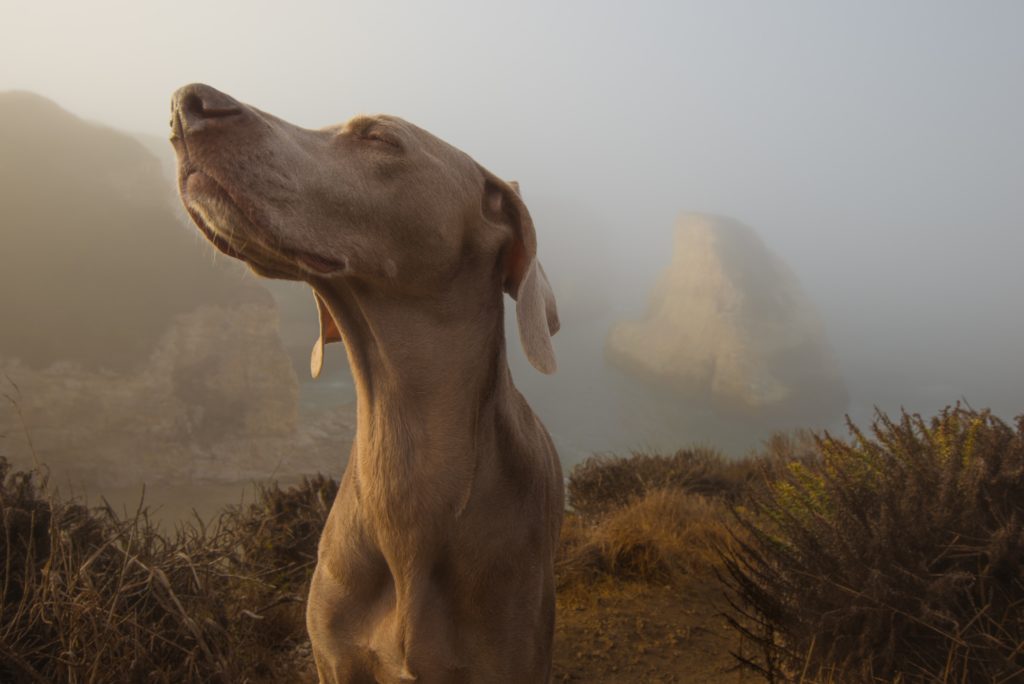Recently I was sitting on my favorite park bench in Monterey with a view of the harbor. I had a great vantage point, slightly elevated, so I could see the water, but not who was on the beach below me. Much to my surprise I was in the front row seat to observe a different path of how to succeed.

How to Keep a Dog Focused?
A neon-colored tennis ball was thrown into the water quite far. I watched a Weimeraner paddle straight to the ball, swoop it up and turn right around to bring it back to the beach. Once again the ball was thrown and the dog retrieved it. All the while, a harbor seal was poking out his head watching what the dog was doing.
The third time the ball landed much farther away. The gentle waves coming ashore contributed to the dog losing sight and, most likely, the scent of the ball. He lost his vision. He went back and forth trying to find the ball, but eventually gave up and went back to shore. However, the tennis ball was still bobbing in the waves. He had aborted the mission!
By now, passersby on the recreation trail had noticed and stopped to watch what would happen next. All of a sudden a sizable rock was thrown in the direction of the tennis ball. The dog had watched where the rock landed in the water. Eager to please and retrieve, he swam straight to where the rock had entered the water. The rock of course had sunk, but the tennis ball was still floating out there, just a bit farther from where he had lost sight of the rock. So the dog remembered his original mission and went for the tennis ball instead. The dog now easily retrieved the ball and returned to the shore.
After this big accomplishment, the dog owner rewarded the dog and leisurely departed in the direction of home. It was a delight to watch and experience vision, mission and performance in action. Here are the lessons I believe are immediately applicable to leadership:
1) Elevate Your Vantage Point
An elevated vantage point gives good perspective. In the dog scenario, I could probably observe the action better than anyone. Being up a little higher precluded me from seeing the details on the ground. This is precisely the reason I frequently ask my clients to pretend to go up to 30,000 feet above their situation and observe what is going on below. It works!
2) Focus
Focus will get you there. Even though there were seals and other distractions, the dog clearly was focused on the ball. It hardly wavered and showed conviction.
3) Aim for the Ideal Direction
If you lose your way, throw something in the direction of your goal and you might just find your way again. This is important. Too often executives give up when they get lost a bit. Instead, just take some action in the direction of your goal and see what happens. You might just find your way again.
4) Stretch Yourself
If you throw too far, you’ll lose your way. Meaning, if the goal is too big, you will get frustrated and stop or turn around, like the dog did. However, there is a benefit to throwing too far. Even though it might wear you out a bit, it also helps to stretch you to go just a bit further.
5) Relax to Observe How to Succeed
Take a break after a big accomplishment — give it a rest and relax. It’s beneficial to reenergize after a major challenge that made you stretch.
This brief observation made me want to get a dog — again!
And I hope these leadership lessons give you pause and ideas of how to succeed in a more observant way.
Photo Credit: Curtesy of Jeff Nissen